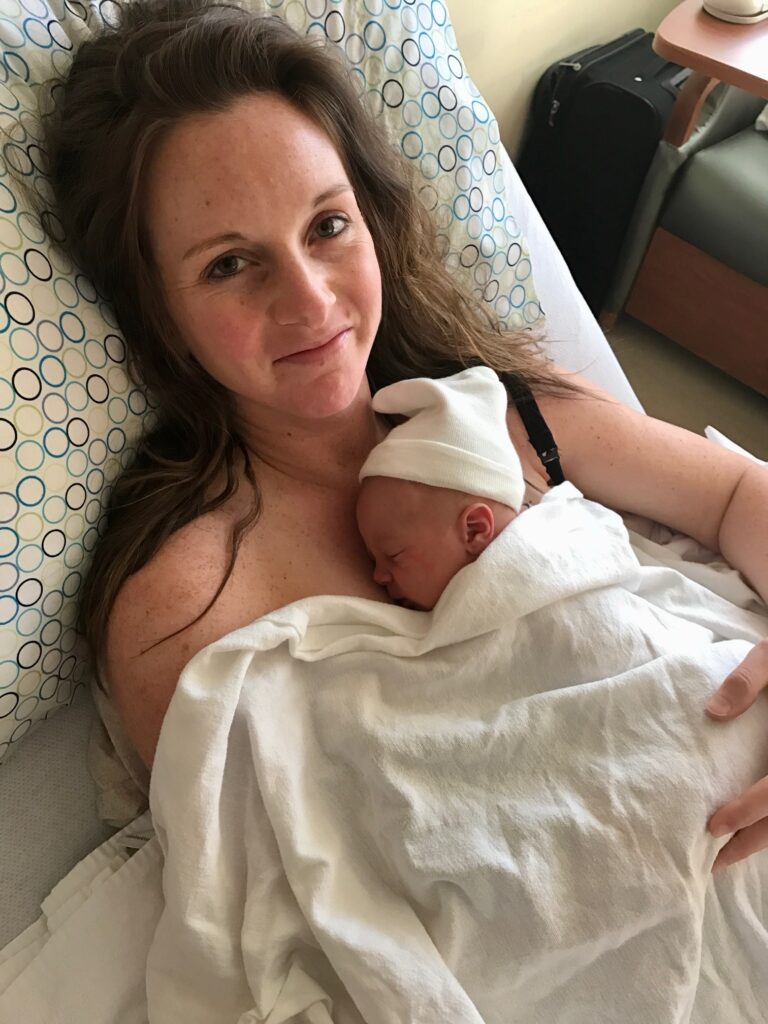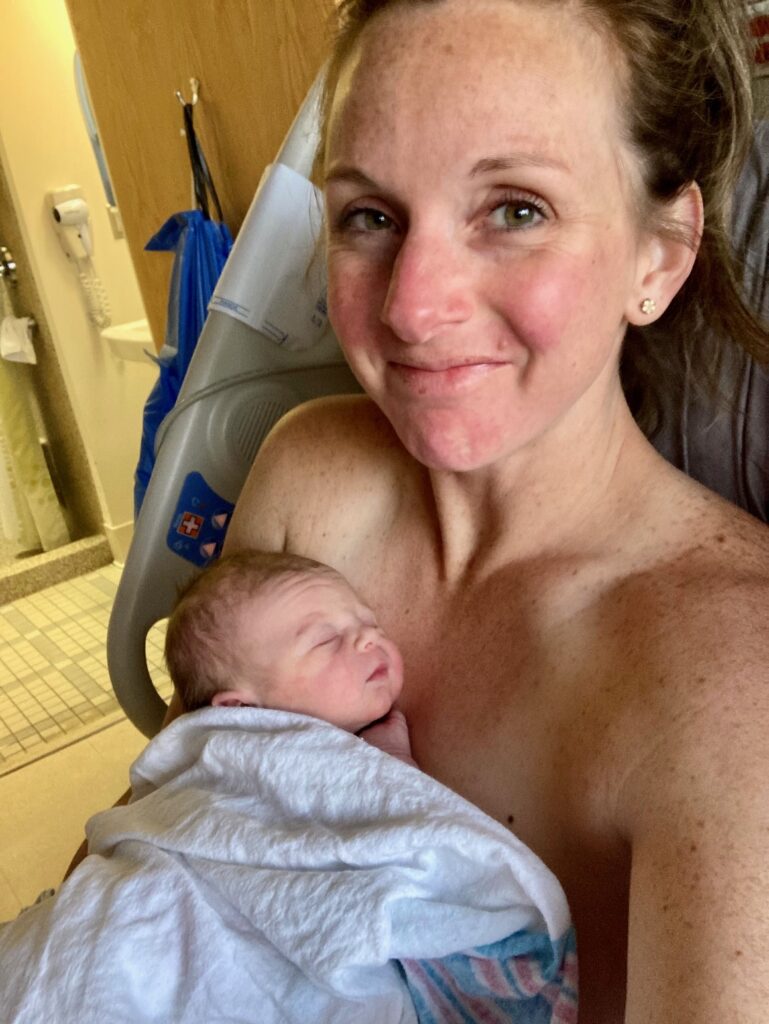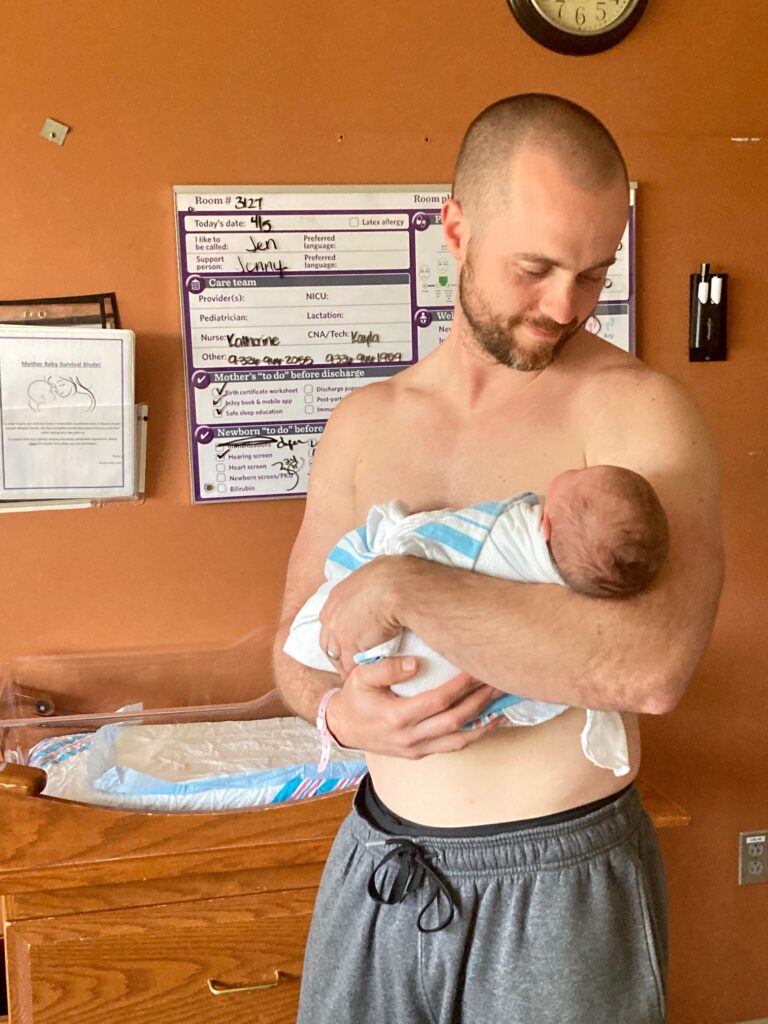
Hands Down The Best Labor Advice For Women

Want to know the best labor advice that’s out there for moms? As a physical therapist with extensive knowledge of the body and someone who’s experienced multiple kinds of births, I want to give you all my best labor advice to set you up for success as you bring your little one into the world! (Disclaimer: This is not medical advice.)
If you haven’t read our other articles like My Ultimate Baby Essentials Guide and Troubleshooting Problems With A New Baby, make sure you read those, too! Check out our full Motherhood Guide for all of the SIE resources about motherhood and parenting.
Here is my best labor advice as a physical therapist, mom of 3 (almost 4!), with a variety of birth experiences:
My Birth Experiences

With baby #1, we did the standard birth prep that most doctors recommend. We took a labor course from some doulas in our community (which was amazing!) and that was about it. We focused more on prepping for baby via items, breastfeeding classes, newborn classes, etc. than we prepped for labor. My son ended up being induced 1 week past his due date. I endured an incredibly painful and exhausting 22-hour unmedicated (AKA no epidural) induction.

With baby #2, we found out at 36 weeks that she was breech. As someone who preferred a more holistic approach to birth, the thought of having a C-section was so discouraging for me! We had a scheduled C-section at 39 weeks despite our best attempts to get baby to flip. That was by far my most difficult post-partum journey to date. Physically, emotionally, you name it.

With baby #3, I was determined to have a successful VBAC (vaginal birth after C-section) because of how difficult my post-partum journey had been after baby #2. I did significant labor prep and had a successful 6 hr labor 1 day before my due date. This was by far the easier labor and recovery out of all of my kiddos. I was so thankful for that experience!
Here are my best labor tips for moms after my three birth experiences:
What To Do During Pregnancy To Set You Up For A Successful Labor
Some of the best labor advice has to do with what you can do before labor even begins. Here are 3 important tips for pregnancy:
1. Stay Active During Pregnancy:

I know, I know. Here I am recommending this in the trenches of my most DIFFICULT pregnancy. It has been so much more difficult to exercise at even a moderate intensity this time around! But even if you don’t feel like it, exercising during pregnancy will set you up for a more successful labor. Staying active during pregnancy is some of the best advice I can give for an easier labor experience.
Why? Because labor is basically like running a marathon. Endurance is KEY not to fade out when the going gets tough. Evidence has shown that it is safe for women to continue exercising throughout pregnancy. Even if you didn’t exercise consistently BEFORE pregnancy, there are still things you can do to help set you up for an easier labor. Here are a few ideas:
1. Cardio:
You’ve got a lot of options here depending on your previous level of activity. I kept running somewhere between 28-38 weeks with all four of my pregnancies. Grabbing a belly band to support your belly is essential if you want to run during pregnancy. Also, the name of the game with exercise and pregnancy is if it becomes painful or incredibly uncomfortable, it’s time to modify. So other options like an elliptical, swimming, or walking at a brisk pace are great cardio alternatives for when running isn’t possible.
2. Strengthening:
Continuing strength training has been essential to preventing, decreasing, and managing pain and discomfort during each of my pregnancies. Toward the end of my pregnancies, I usually end up having some pelvic or pubic symphysis pain. I decrease the amount I’m lifting and/or avoid or modify asymmetric movements (such as lunges) to prevent pelvic pain. Incorporating stabilization exercises such as abdominal sets, pelvic tilts, bridging, side-lying clamshells, and other pelvic floor and core exercises has also been helpful in maintaining an active pregnancy.
There are several fitness instructors who are certified in prenatal and post-partum exercise. Pregnancy and Postpartum TV is one of my FAVORITE exercise resources during pregnancy. She even has some labor prep videos! I also have another friend, Rachel Jensen, who is a certified prenatal and postnatal fitness instructor. She has some great content online for Mamas!
Stretching:
This was what was most definitely missing during my first pregnancy. I was great about exercising, but totally neglected stretching! If there is ever something I cut from my workout, it’s stretching at the end, which is totally bad for injury prevention and many other aspects of health!
I have used Spinning Babies daily stretching guide these last 2 pregnancies as a guide for what muscle groups to focus on. (Side note: hearing their approach to helping Mamas have a more smooth labor is sooo interesting! Especially as a physical therapist.) I also used the forward-leaning inversion position to facilitate baby being head-down.
2. Red Raspberry Leaf Tea

My second piece of top labor advice regarding pregnancy is drinking red raspberry leaf tea. The main reason I drank red raspberry leaf tea (and will again this pregnancy) starting at 32-34 weeks is that it stimulates uterine contraction. This can theoretically help prevent uterine rupture during labor. This was especially important for me with a goal to have a VBAC. Red raspberry leaf tea has also been found in studies to prevent premature birth, and decrease the need for medical interventions during labor.
I also just read that it has been shown to promote a strong uterine lining in women trying to conceive! Most of the studies showing these results are small, but if there’s a chance of the benefits listed above, it was worth a try for me! The only negative side effect that I read from women online was that it can cause an upset stomach. (I never had any issues). I drank 1-2 glasses of iced RR leaf tea during my last pregnancy from 34 weeks on.
3. Dates

My third piece of top labor advice during pregnancy is eating dates! Ok, the study I read about eating dates starting at 36 weeks being correlated to faster labor with increased cervical ripening was truly amazing to me! The recommendations are around 6 dates a day based on the study (you may need to check with your doctor if you have gestational diabetes or other medical conditions to see if it’s ok). I found having 2 with every meal helped spread out the sugar a bit during the day. But considering I was 4cm dilated 1 day before my due date and had a 6hr labor with my third kiddos, I will testify personally to the effectiveness of eating the dates! Again, no negatives here unless you have to monitor your blood sugar.
During Labor
When you came across this article, this was probably the section you were waiting for. What can you do during labor to help things move along, manage pain, and avoid unnecessary medical interventions?
Here is my top labor advice for during labor:
Positions

During my last pregnancy I learned so much about how the position you are in affects how open (or not open) the pelvic outlet is when baby comes out. Apparently, lying on your back causes the most narrow opening at the pelvis for baby to come out, which can cause prolonged labor or difficulty delivering. For some women, this won’t matter so much, but for others, this could be the difference between a prolonged labor and/or C-section and a more smooth labor with less tearing, etc.
After much research and learning from several doulas and physical therapists, here are a few recommendations for positioning during labor to help baby move into a good position for delivery:
Change positions regularly: Obviously, whether or not you get an epidural will affect your ability to move, but it’s still possible to change positions regularly during labor. Performing hip circles in both directions on a physioball, doing lunges (forward, backward, and laterally), walking, lying on your side, and being on your hands and knees are great positions to move through during labor.
Pelvic tilts: I’ll have to include a video for this one, but I learned from a PT that doing pelvic tilts in side-lying, hands and knees (quadruped), and/or on your back with your knees bent can help move baby along during labor.
Hip internal rotation: I’ll include a video for this, too, but alternating hip internal rotation and external rotation with contractions has also been shown to help progress baby down the birth canal. Pushing with knees together (hip internal rotation position) has also shown to be helpful! Again, you could do this in quadruped, side-lying, or lying on your back with your knees bent.
Support

It’s possible this could be my #1 top piece of labor advice: Having a supportive medical team and support person with you throughout pregnancy and labor. Having a support person who can not only provide encouragement and pain relief techniques but also advocate for you during labor is HUGE to making your labor experience an overall positive one. Doulas are generally the best option for this, but they do come at a cost. If you have a friend who’s passionate about the birth process and would be willing to walk through the birth process with you, they might be a great option!
Of course, there is always your spouse or significant other who can provide these things, but I’ve found there are a lot of men who aren’t quite up to the task of doula/supporter/encourager during labor. My husband is the exception to that rule. His background as a physical therapist and working with patients who endured acute trauma in the hospital makes him a wonderful support person during labor. He’s equipped to do manual techniques like counterpressure for pain relief due to his experience with manual therapy and his knowledge of orthopedics.
I do think if you’re able to hire a doula and take some of the pressure off of your spouse/partner, it could be nice for them to simply focus on supporting you versus getting into the nitty gritty of things like counterpressure for pain relief, guiding you through position changes during labor, and coaching you through the pushing process.
Environment

If you’re birthing at home or in a birth center, you’ll probably have plenty of support creating a calm and welcoming environment for baby to arrive in. Creating a peaceful space in the hospital setting can be a little more challenging, so let me give you a few things I’ve done to help create a positive birth environment there:
1. Dim the lights
This simple change makes a HUGE difference in the labor environment. Don’t be afraid to turn the lights down! I think because I work in the hospital and know my way around a hospital room I’m not afraid to make adjustments (within reason of course!)
2. Move Around As Long As You Can
Even if you’re getting an epidural, move around as much as possible in different areas of your room for as long as you can. Do your hip circles on a physioball by the window, sit on a shower chair backwards and let hot water run against your back, walk around, etc. Don’t feel like you need to be stuck in bed! Nothing stalls labor like lack of movement. Many hospital have wireless fetal monitors for baby that allow for increased movement, so ask about that before you go so you can have the freedom to roam. Something about just being by the window can change your mood!
3. Play Calming Music
One of the things that made my last labor experience so much better was creating a labor playlist for the big day. Worship music is the thing that brings me the most peace and calm, so I created a worship playlist that was playing when sweet “A” was born. Dimmed lights + music is a great recipe for a peaceful birth environment!
Make sure to check out my friend Lana’s, “Labor With Fear Course” for some GREAT tips to prepare mentally and spiritually for labor and delivery. Not to mention some great practical tips thrown in as well! Use code JEN for a discount!
Good Luck, Mama!
Praying for a peaceful labor for you, Mama! Odds are things won’t go perfectly according to plan, but I hope these tips will make your experience a bit smoother and a bit sweeter.
Did you utilize any of these labor tips? What other tips would you add? Let me know in the comments!





2 Comments
Pingback:
Pingback: